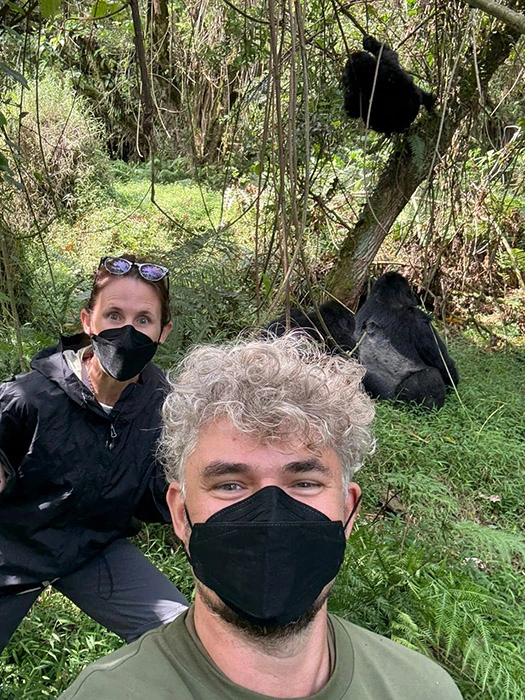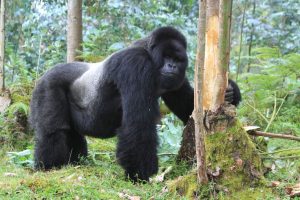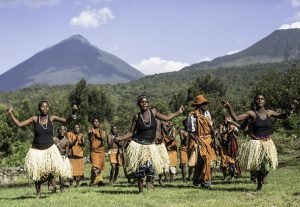Are Gorillas Primates?
Imagine a creature that is taller than the tallest human, with enormous arms that are incredibly strong, but surprisingly soft eyes. Are Gorillas Primates? The gorilla is a magnificent primate found in the dense rainforests of Africa. Gorillas are primates, after all! According to Science Direct, they belong to a class of mammals distinguished by their forward-facing eyes, gripping hands and feet, and intelligence. The largest primates on the planet are gorillas, who belong to the ape family rather than the monkey family.
This blog will explore the fascinating world of primates, highlighting the distinctive characteristics of gorillas and their unique habitats.
Primates: What Are They?
Primates are a much larger group of animals, of which the gorilla is only one fascinating member. However, what precisely qualifies a primate as such? Here’s a quick summary:
- Primates are categorized as mammals because they have fur or hair, give birth to live children, and nurse their young.
- It is commonly known that primates have hands and feet designed for grasping. Their flexible fingers and opposable thumbs (or huge toes) enable them to grasp branches, food, and tools.
- Primates have forward-facing eyes, in contrast to many other mammals. This improves depth perception, which is useful for determining distances when looking for food or swinging through trees.
- Primates’ brains are bigger and more sophisticated than those of most other mammals in proportion to their physical size. Their sophisticated social lives, advanced intelligence, and problem-solving skills are supported by this.
The Family Tree of Primates
Primates are not limited to gorillas! Other primates you may be familiar with include:
Monkeys
A varied group of primates found worldwide, monkeys are known for their long tails and cheerful disposition. They have forward-facing eyes, grasping hands and feet, and comparatively large brains, just like other primates.
Great Apes
Our closest living cousins are orangutans, chimpanzees, and bonobos. Large brains, sophisticated social behaviors, and tool use are just a few of their many human-like traits.
Humans
It may surprise you to learn that we are also primates! Our grasping hands, forward-facing eyes, and remarkably large, complex brains are traits that distinguish us as primates.
In what locations do gorillas reside?
The beautiful tropical forests of equatorial Africa are the gorillas’ home. They can be found in two different places:
The Central African Forests
Eastern gorillas live in the hilly rainforests that border Rwanda, Uganda, and the Democratic Republic of the Congo.
West Africa
The rainforests of Gabon, Cameroon, and the Republic of Congo are home to Western gorillas.
East African mountain gorillas
Found in East Africa’s high-altitude forests, mountain gorillas are a rare and endangered subspecies of eastern gorillas. What you need to know about them is as follows:
- Mountain gorillas live at high elevations in the Virunga Mountains, a volcanic range that spans Rwanda, Uganda, and the Democratic Republic of the Congo, as well as in Uganda’s Bwindi Impenetrable National Park. Elevations between 8,000 and 13,000 feet are ideal for them.
- In contrast to other gorilla species, mountain gorillas have adapted to the colder climate by growing thicker and longer fur. In the freezing mountain air, this keeps them warm.
- Unfortunately, because of habitat loss, poaching, and conflict, mountain gorillas are in grave danger of extinction. Because of their extremely low population, conservation activities are essential to their survival.
- Mountain gorillas are social animals that live in regiments, which are groups of ten to twenty people. The dominant male silverback that leads each colony is easily identified by the silver-gray hair on his back. The troop also includes many females, younger males, and infants.
Protecting Gorillas through Responsible Tourism
Think of the excitement of seeing a magnificent mountain gorilla up close in its verdant, foggy environment. Thanks to conservation initiatives and the growth of ethical gorilla trekking experiences, this breathtaking encounter is now a reality that supports the welfare of these amazing animals. The perception of gorillas as primarily elusive animals in danger from human activity is long gone. These days, carefully controlled tourism, like as that provided by Abunda Discoveries Uganda, is essential to their existence.
Here are several ways that ethical gorilla trekking promotes conservation:
Funding for Protection
Proceeds from trekking excursions and gorilla permits go directly toward funding research projects, habitat preservation projects, and anti-poaching patrols. For gorilla populations to remain secure and healthy, this financial support is essential.
Increasing Knowledge
Understanding and admiration for these gentle giants increase as more people get to see gorillas in their natural habitat. As a result, a worldwide network of conservationists is fostered.
Community Involvement
Conscientious travel agencies, such as Abunda Discoveries Uganda, collaborate closely with nearby communities. Locals are provided with the resources they need to manage their environment because they recognize the significance of protecting gorillas for their future and the well-being of their communities.
Memorable Gorilla Experiences with Abunda Discoveries Uganda
One excellent example of a tour operator that puts the welfare of gorillas and visitors’ unforgettable experiences first is Abunda Discoveries Uganda. Their dedication to conservation practices ensures that your gorilla trek directly contributes to the protection of these endangered animals, and their knowledgeable guides guarantee a respectful and safe experience.
You may be a responsible participant in gorilla conservation rather than just an observer by adopting this responsible approach. Plan your journey now!




